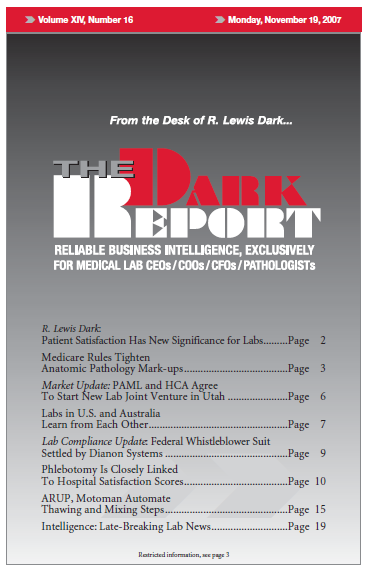IT’S A REMINDER THAT WHISTLEBLOWERS continue to look for opportunities to turn in laboratories, even if the violations are relatively minor. Last month, Dianon Systems Inc., of Stratford, Connecticut, agreed to pay $1.5 million to settle a federal false claims action originally filed by pathologist James J. Tiesinga, M.D., who once worked for Dianon in …
Federal Whistleblower Suit Settled by Dianon Systems Read More »
To access this post, you must purchase The Dark Report.


